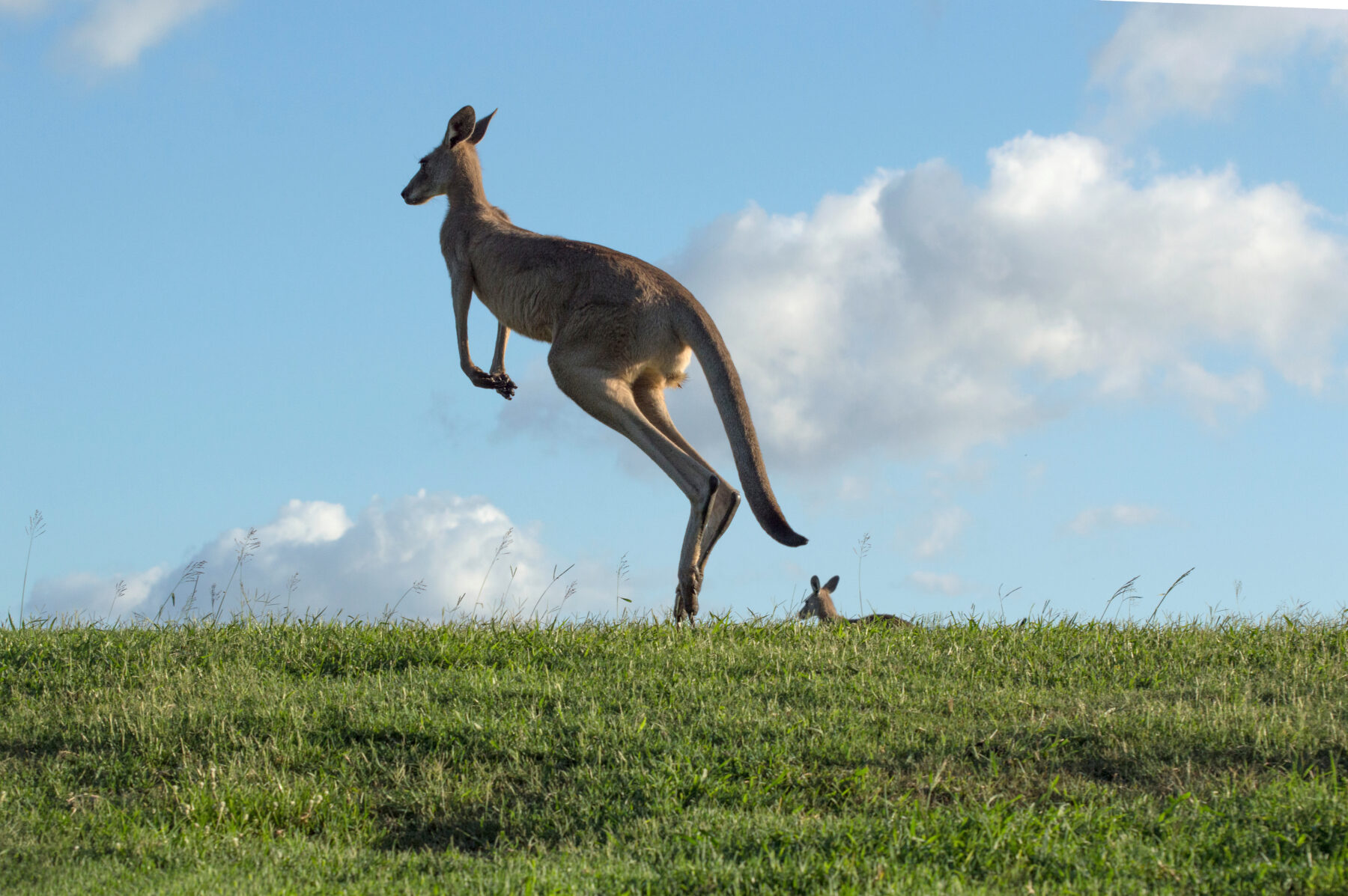Leaps and bounds

Roger Smith
Roger Smith

It happened during a multi-day hike in western Victoria. I’d been walking along a steep trail on a rocky escarpment when evening fell and I quickly pitched my pup tent on the only flat spot I could find, which was surrounded by impenetrable scrub.
I’d stepped outside for a moment, on the downhill side of the tent, when I noticed a huge male eastern grey kangaroo hopping soundlessly towards me along the rocky track on the uphill side of the tent. Like all kangaroos in difficult terrain, his head was down, watching where he placed his feet in the fading light, so he was caught off guard by our tent – smack in the middle of his path, with a man on the other side of it.
He stopped and, with nowhere else to go, launched his massive body high into the air, clearing both me and the tent in a single, smooth, spontaneous leap. I had no time to duck but when I looked behind me there he was, propped up on his hind legs and looking as stunned as me, as if to say, “Where the hell did you come from?” We gazed at each other for a moment, then off he hopped as soundlessly as he’d arrived.
I did a rough estimate of what the old man kangaroo had done. From a standing start, he’d leapt about seven metres horizontally and two metres vertically. Not only that, he’d pulled up instantaneously, gawked at me and hopped off, making not the slightest sound on the rocky ground. For any other animal, including a human, this scenario would have involved noise and probably a collision with something. And it all happened in twilight, when sight for most diurnal animals is at its weakest.
I’d just witnessed the culmination of 15 million years of kangaroo evolution; an explosive yet soundless leap in near darkness that I doubt any other large land mammal could emulate. It was probably the absolute pinnacle of athletic achievement in the animal kingdom. Treadmill studies show that at speeds above 6km/h, hopping is energetically the cheapest mode of travel. A fleeing kangaroo can increase its speed without expending more energy by upping the distance between landfalls.

Evolution has spawned a diverse suite of roos and wallabies that ranges from formidable red kangaroos to dwarf wallabies. Their modern relatives live in trees, on the ground, in rainforests and in the deserts of Earth’s driest inhabited continent. We are so incredibly fortunate to live in the land of the kangaroo but I often wonder if we truly appreciate how lucky we are. I’ve heard too many Australians denigrate our long-footed friends without attempting to comprehend the miracle they are.
Read more from Roger’s Treading Lightly column.





